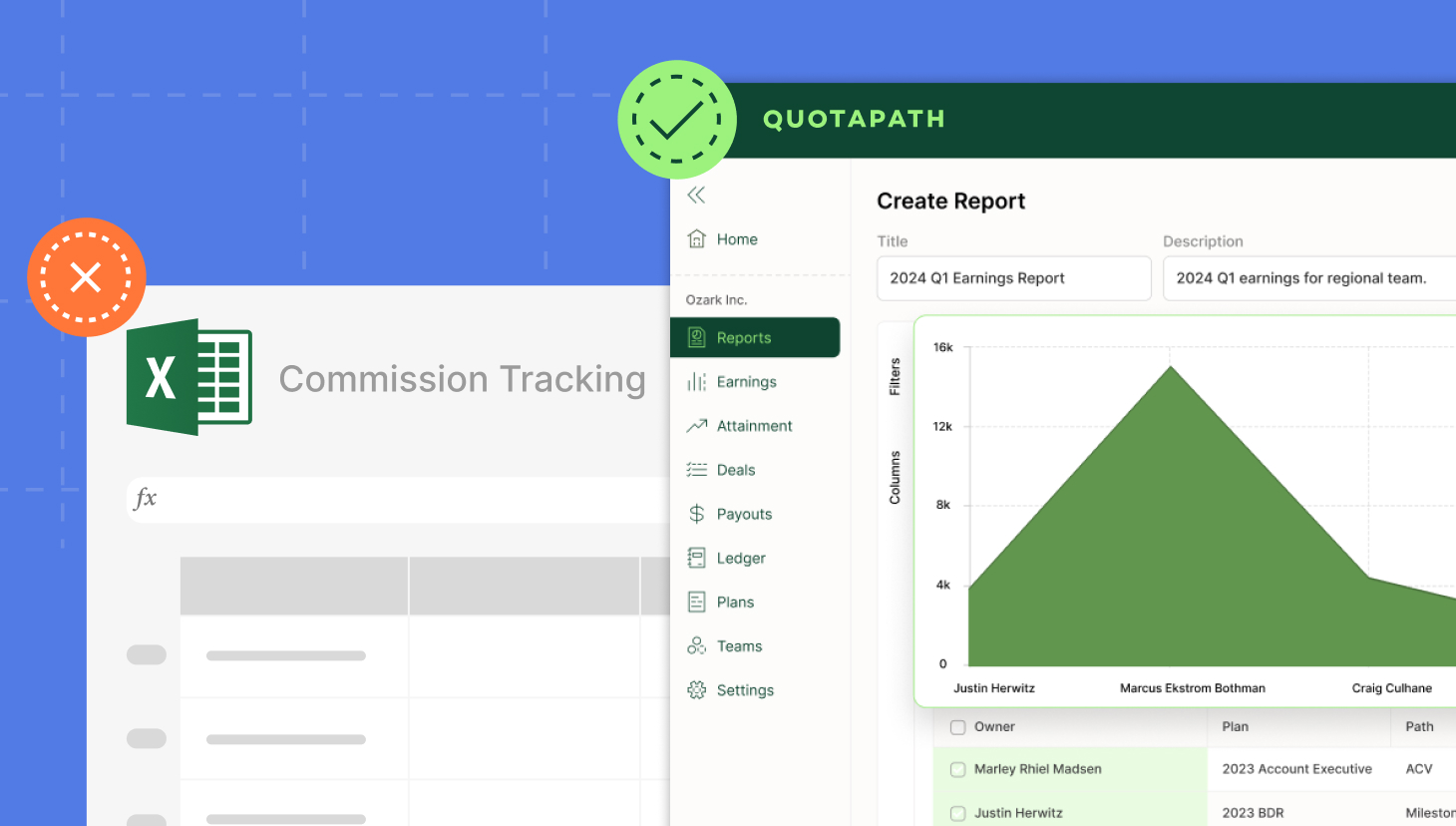The sales forecasting struggle is real. Fewer than 25% of sales organizations have forecast accuracy of 75% or greater according to a Korn Ferry study. The same study found that the rewards of getting sales forecasting right are significant. By establishing a structured process, win rates of forecasted deals increased by 17% compared to businesses using a less formal approach. And that’s only one of many benefits of accurate sales forecasting.
Another study revealed that removing human bias, errors, and other issues relating to manual efforts increases forecast accuracy by 76%. This is significant when you consider the many ways that businesses leverage sales forecasting.
So to help, we took a closer look at what you need to do to nail sales forecasting and reap the benefits.
Below, check out 8 sales forecasting tips, free sales forecasting templates, and resources that you can begin using immediately.
What is sales forecasting?
First, let’s review what sales forecasting actually entails.
Sales forecasting predicts sales for individual reps, sales teams, or the entire organization on a weekly, monthly, quarterly, or annual basis.
Leaders use this information to guide and inform strategic decisions across the business including budgeting, hiring, and manufacturing.
Calculate OTE:Quota ratios
Use this free calculator to ensure your reps’ on-target earnings and quotas mirror what they’re bringing in for the business.
Try it NowBenefits of sales forecasting
The benefits of sales forecasting include:
- Facilitating financial, staffing, and inventory decision-making and planning, including around future sales compensation strategy
- Improving pipeline management by helping determine when and where additional prospecting is needed
- Aligning and adjusting sales quotas with revenue projections
- Reducing time needed for territory design and setting quotas
- Benchmarking to gauge and recognize trends more easily
- Improving win rates by inspiring sales reps to focus on high-revenue, high-profit opportunities in the sales pipeline
- Enabling the business to more accurately project costs and revenue
Challenges
Producing a consistent and accurate sales forecast can be difficult. Some of the most common sales forecasting challenges encountered by businesses include:
Data quality or quantity
Incomplete or inconsistent data is often caused by poor adoption of a customer relationship management platform (CRM), where data isn’t being entered in a timely matter or at all. This reduces the accuracy of historic information for generating predictive patterns for sales forecasting accuracy. For organizations that don’t use a CRM (think: HubSpot, Close, Salesforce), manual forecasting spreadsheets also lead to greater risks of human error.
Subjectivity
Relying too heavily on sales reps’ gut feelings about opportunities and their probability of closing, versus objective data, leads to inaccuracies. Subjectivity on the part of the seller can stem from a lack of pipeline and increasingly limited selling time resulting in forecasting deals to close that aren’t quite ready.
Lack of integration
Although sales organizations now use an increasing number of sales technology tools, a lack of planning and integration within the sales tech stack results in forecasting inaccuracies. When the CRM is integrated with other software like quota tracking and forecasting solutions, these inefficiencies and errors reduce in favor of more reliable forecasting.
Sales forecasting tips
To ensure accurate forecasts, it’s important to set yourself up for success. Get started with the following steps:
1. Create a sales process
Establishing a consistent process and sales methodology with well-defined stages and steps facilitates more accurately predicting when an opportunity will close. Plus, a standardized sales process includes clear definitions of each stage, avoiding confusion about deal status. This will enhance your teams sales techniques.
Resources:
What is the MEDDIC sales training?
How a discovery call can help you win more deal
2. Establish individual and team quotas
Quotas provide a financial baseline and help gauge rep and team performance. To set an appropriate quota that’s fair and reflective of your company’s historical performance, use our free Quota:OTE Ratio Calculator.
3. Use a customer relationship management (CRM) tool
CRMs serve as a database for sales reps, simplify tracking opportunities, and increase the accuracy of deal closing projections and forecasting. Learn more about CRMs and other sales tech stack must-haves.
4. Select a sales forecasting method
How you choose to approach sales forecasting depends on factors like the age of your business, the size of your sales team and pipelines, the quality of your sales data, and the consistency of your data tracking habits. It’s common for forecasting methods to evolve with your organization.
For instance, your business might forecast based on the length of the sales cycle, while others measure from the opportunity stage.
5. Include other departments within your organization
Dig deeper to gain additional insights from other departments within the business to understand how teams like marketing, product, finance, and HR may impact or be influenced by the sales forecast. For example, you’ll want to consider upcoming marketing plans or product launches, how well the forecast aligns with company financial goals, and potential hiring strategy adjustments based on the forecast.
6. Note year-over-year variances
It’s also important to compare the current sales forecast with the prior year to identify variances, discrepancies, and trends. Documentation never hurt anyone, so be sure to make note of your observations to improve the accuracy of future sales forecasting efforts.
7. Hold reps accountable
Communicate the importance of up-to-date data and accurate forecasts to your sales team. Then hold them accountable for their performance against forecasted deals.
8. Gather feedback
Determine which forecasting approach is most effective for your business and make any necessary adjustments to increase accuracy.
After following these steps, consider changes to the following factors when referring to your sales forecasting:
- Staffing – increasing or reducing the number of sales reps on the team affects future outcomes with either less reps or more that aren’t fully ramped.
- Sales compensation plan – implementing changes to the comp plan, like clawbacks, may reduce sales revenue and reduce churn that boosts renewals.
- Territory – realigning rep territories often creates a temporary drop in sales while team members adjust to their new assignments.
- Competitive – what competitors are doing can influence sales outcomes by either increasing pressure or driving greater results.
- Economic – stronger economies often accelerate sales cycles, while economic downturns may lengthen the process.
- Market – tracking market impacts on your customers to know which ones are being negatively impacted by their market conditions. For example, the travel industry took a serious downturn during the COVID-19 pandemic.
- Industry – your industry’s trends influence sales, so keep track of what is happening to anticipate the impact of these trends on your business.
- Legislative – be aware of any legislative changes that may impact your market or industry.
- Product – any changes, new feature launches or new product launches your product team is rolling out will influence sales during the upcoming period.
- Seasonal – if your sales tend to be seasonal, keep this in mind when making sales forecasting adjustments.
Design, track, and manage variable incentives with QuotaPath. Give your RevOps, finance, and sales teams transparency into sales compensation.
Talk to SalesSimplify the process
Accurate sales forecasting is essential for guiding business planning and decision-making. Challenges like subjectivity, inaccurate data, and manual processes greatly impact your ability to get forecasting right. Forecasting software, like QuotaPath, can improve the process by using commission projections to create accurate budgets and forecasts faster. To see QuotaPath’s forecasting functionalities and to see your commission agreement mapped out in our system, schedule a custom demo with our team.



